Investigation on Ti-6Al-4V Microstructure Evolution in Selective Laser Melting
Abstract
1. Introduction
2. Model Description
2.1. Model of Rapid Solidification Finite Element
2.2. Model of Phase Field
- (1)
- To simplify the model, Ti-6Al-4V is regarded as a binary alloy by treating the solute as a mixed AL-V element;
- (2)
- By default, the diffusion coefficient of the solute in the solid phase and the liquid phase does not change during the solidification temperature range;
- (3)
- The phase diagram data in the solidified temperature interval is unchanged by default;
- (4)
- The temperature field is applied in the form of a temperature gradient and a cooling rate, ignoring the latent heat of phase change.
3. Results and Discussions
3.1. Finite Element Simulation of Temperature Field
3.2. Phase Field Simulation of Microstructures
4. Conclusions
- (1)
- The finite element simulation can obtain the temperature field and temperature gradient distribution in the SLM process, and the two correspond to each other in the macroscopic range.
- (2)
- The scanning speed affects the temperature gradient and cooling rate within the bath. When the scanning speed was increased from 1000 mm/s to 1600 mm/s, the temperature gradient was increased from 5.64 × 104 K/cm to 1.84 × 105 K/cm, and the cooling rate was increased from 5.56 × 105 K/s to 1.93 × 106 K/s.
- (3)
- The phase field method can simulate the transition of Ti-6Al-4V from liquid phase to solid phase during solidification, and the microstructure morphology is columnar dendrite growing along the direction of temperature gradient.
- (4)
- Microscopic segregation was observed during the formation of dendrites, and it was found that the solute was concentrated in the liquid phase near the tip of the dendrite and between the dendrite arms.
- (5)
- Scanning speed has an effect on the pitch of the dendrite arm. By increasing the scanning speed from 1000 mm/s to 1600 mm/s, the distance between the main arms is reduced from 1.50 μm to 1.07 μm.
Author Contributions
Funding
Conflicts of Interest
References
- Gibson, I.; Rosen, D.; Stucker, B. Development of additive manufacturing technology. In Additive Manufacturing Technologies; Springer: New York, NY, USA, 2015; pp. 19–42. [Google Scholar]
- Guo, N.; Ming, C.L. Additive manufacturing: Technology, applications and research needs. Front. Mech. Eng. Chin. 2013, 8, 215–243. [Google Scholar] [CrossRef]
- Lewandowski, J.J.; Seifi, M. Metal additive manufacturing: A review of mechanical properties. Annu. Rev. Mater. Res. 2016, 46, 151–186. [Google Scholar] [CrossRef]
- Bourell, D.L. Perspectives on additive manufacturing. Annu. Rev. Mater. Res. 2016, 46, 1–18. [Google Scholar] [CrossRef]
- Cruz, K.S.; Meza, E.S.; Fernandes, F.A.P.; Quaresma, J.M.V.; Casteletti, L.C.; Garcia, A. Dendritic arm spacing affecting mechanical properties and wear behavior of al-sn and Al-Si alloys directionally solidified under unsteady-state conditions. Metall. Mater. Trans. A 2010, 41, 972–984. [Google Scholar] [CrossRef]
- Osorio, W.R.; Goulart, P.R.; Garcia, A.; Santos, G.A.; Neto, C.M. Effect of dendritic arm spacing on mechanical properties and corrosion resistance of al 9 wt pct si and zn 27 wt pct al alloys. Metall. Mater. Trans. A 2006, 37, 2525–2538. [Google Scholar] [CrossRef]
- Razavi, S.-M.-J.; Ferro, P.; Berto, F. Fatigue assessment of Ti–6Al–4V circular notched specimens produced by selective laser melting. Metals 2017, 7, 291. [Google Scholar] [CrossRef]
- Zhang, P.; He, A.N.; Liu, F.; Zhang, K.; Jiang, J.; Zhang, D.Z. Evaluation of low cycle fatigue performance of selective laser melted titanium alloy Ti–6Al–4V. Metals 2019, 9, 1041. [Google Scholar] [CrossRef]
- Rafi, H.K.; Karthik, N.V.; Gong, H.; Starr, T.L.; Stucker, B.E. Microstructures and mechanical properties of ti6al4v parts fabricated by selective laser melting and electron beam melting. J. Mater. Eng. Perform. 2013, 22, 3872–3883. [Google Scholar] [CrossRef]
- Zhou, B.; Zhou, J.; Li, H.; Feng, L. A study of the microstructures and mechanical properties of Ti–6Al–4V fabricated by slm under vacuum. Mater. Sci. Eng., A 2018, 724, 1–10. [Google Scholar] [CrossRef]
- Popovich, A.; Sufiiarov, V.; Borisov, E.; Polozov, I.A. Microstructure and mechanical properties of ti-6al-4v manufactured by slm. Key Eng. Mater. 2015, 651, 677–682. [Google Scholar] [CrossRef]
- Thijs, L.; Verhaeghe, F.; Craeghs, T.; Humbeeck, J.V.; Kruth, J.P. A study of the microstructural evolution during selective laser melting of Ti–6Al–4V. Acta Mater. 2010, 58, 3303–3312. [Google Scholar] [CrossRef]
- Roberts, I.A.; Wang, C.J.; Esterlein, R.; Stanford, M.; Mynors, D.J. A three-dimensional finite element analysis of the temperature field during laser melting of metal powders in additive layer manufacturing. Int. J. Mach. Tools Manuf. 2009, 49, 916–923. [Google Scholar] [CrossRef]
- Yang, J.; Sun, S.; Brandt, M.; Yan, W. Experimental investigation and 3d finite element prediction of the heat affected zone during laser assisted machining of Ti–6Al–4V alloy. J. Mater. Process. Technol. 2010, 210, 2215–2222. [Google Scholar] [CrossRef]
- Foroozmehr, A.; Badrossamay, M.; Foroozmehr, E.; Golabi, S.I. Finite element simulation of selective laser melting process considering optical penetration depth of laser in powder bed. Mater. Des. 2015, 89, 255–263. [Google Scholar] [CrossRef]
- Zhuang, J.R.; Lee, Y.T.; Hsieh, W.H.; Yang, A.S. Determination of melt pool dimensions using doe-fem and rsm with process window during slm of Ti–6Al–4V powder. Opt. Laser Technol. 2018, 103, 59–76. [Google Scholar] [CrossRef]
- Salsi, E.; Chiumenti, M.; Cervera, M. Modeling of microstructure evolution of Ti–6Al–4V for additive manufacturing. Metals 2018, 8, 633. [Google Scholar] [CrossRef]
- Gong, X.; Chou, K. Phase-field modeling of microstructure evolution in electron beam additive manufacturing. JOM 2015, 67, 1176–1182. [Google Scholar] [CrossRef]
- Sahoo, S.; Chou, K. Phase-field simulation of microstructure evolution of Ti–6Al–4V in electron beam additive manufacturing process. Addit. Manuf. 2016, 9, 14–24. [Google Scholar] [CrossRef]
- Wu, L.; Jing, Z. Phase field simulation of dendritic solidification of Ti–6Al–4V during additive manufacturing process. JOM 2018, 70, 2392–2399. [Google Scholar] [CrossRef]
- Consultants, C. Comsol Multiphysics Version 4.3 Highlights; COMSOL AB: Stockholm, Sweden, 2015. [Google Scholar]
- Elmer, J.W.; Palmer, T.A.; Babu, S.S.; Zhang, W. Phase transformation dynamics during welding of Ti–6Al–4V. J. Appl. Phys. 2004, 95, 8327–8339. [Google Scholar] [CrossRef]
- Nastac, L. “Cfd modeling and simulation in materials processing” symposium. Metall. Mater. Trans. B 2014, 45, 12. [Google Scholar] [CrossRef][Green Version]
- Ramirez, J.C.; Beckermann, C.; Karma, A.; Diepers, H.J. Phase-field modeling of binary alloy solidification with coupled heat and solute diffusion. Phys. Rev. E: Stat. Nonlinear Soft Matter Phys. 2004, 69, 051607. [Google Scholar] [CrossRef] [PubMed]
- Echebarria, B.; Folch, R.; Karma, A.; Plapp, M. Quantitative phase-field model of alloy solidification. Phys. Rev. E: Stat. Nonlinear Soft Matter Phys. 2004, 70, 061604. [Google Scholar] [CrossRef] [PubMed]
- Burden, M.H.; Hunt, J.D. Cellular and dendritic growth. I. J. Cryst. Growth 1974, 22, 109–116. [Google Scholar] [CrossRef]
- Kurz, W.; Fisher, D.J. Dendrite growth at the limit of stability: Tip radius and spacing. Acta Metall. 1981, 29, 11–20. [Google Scholar] [CrossRef]
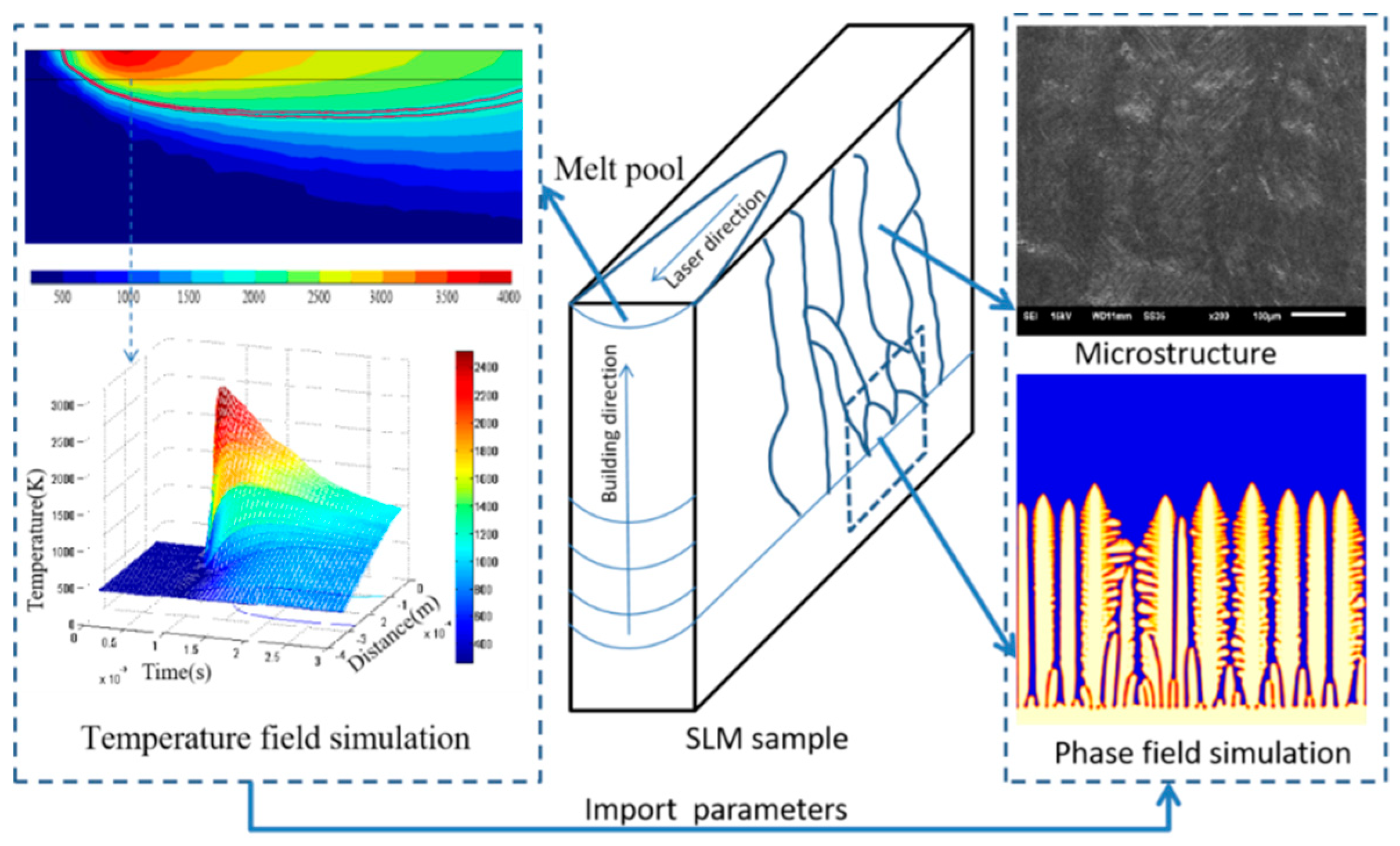
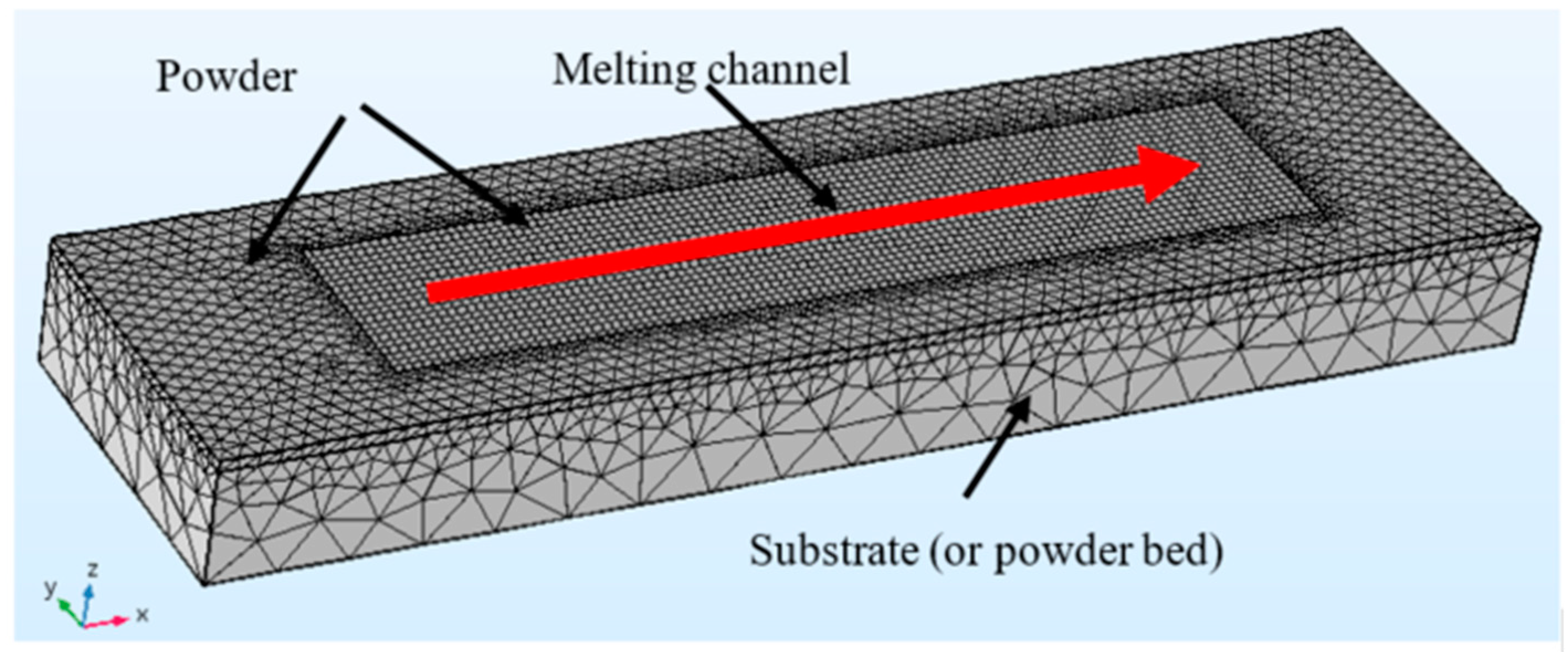
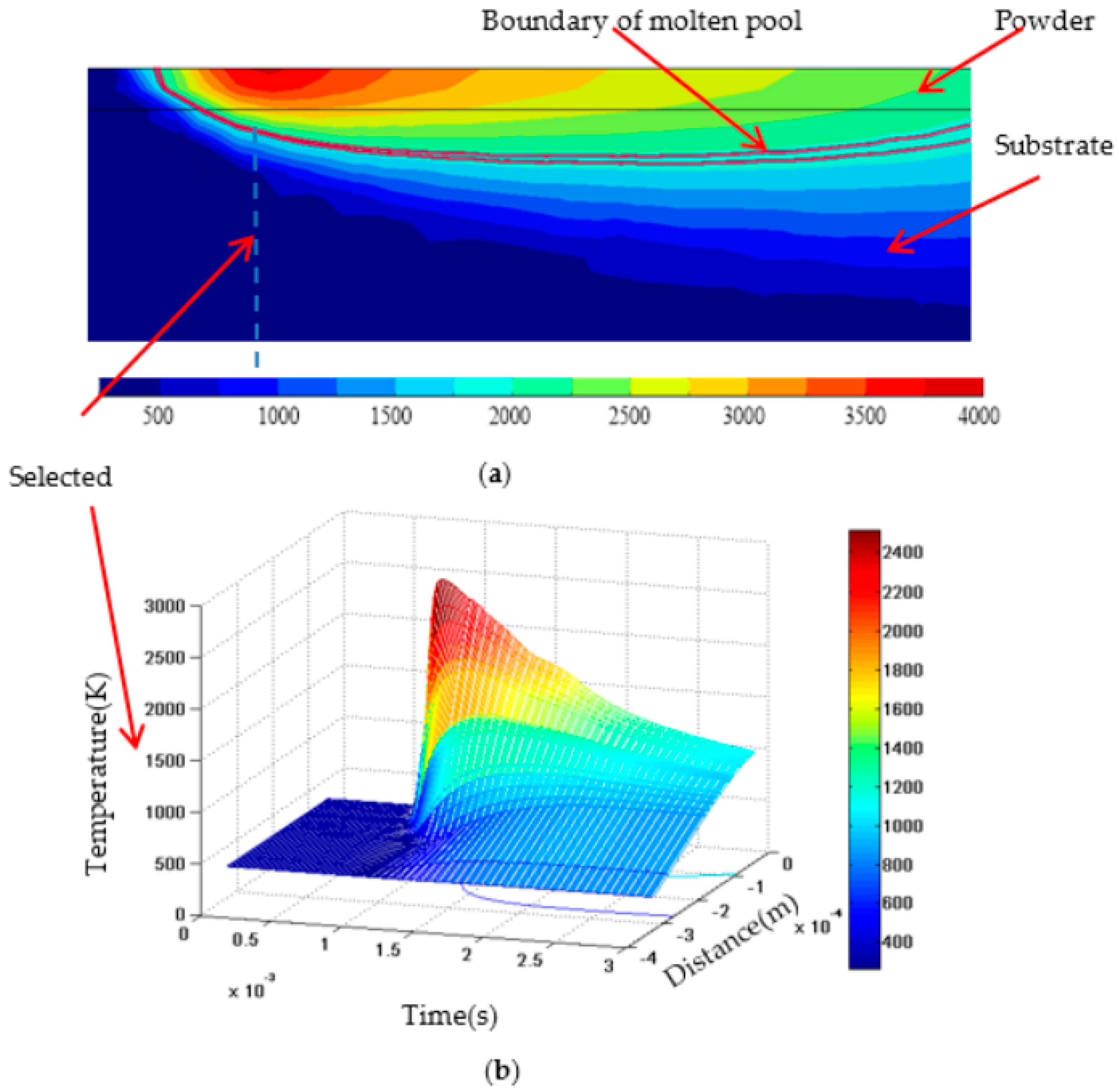
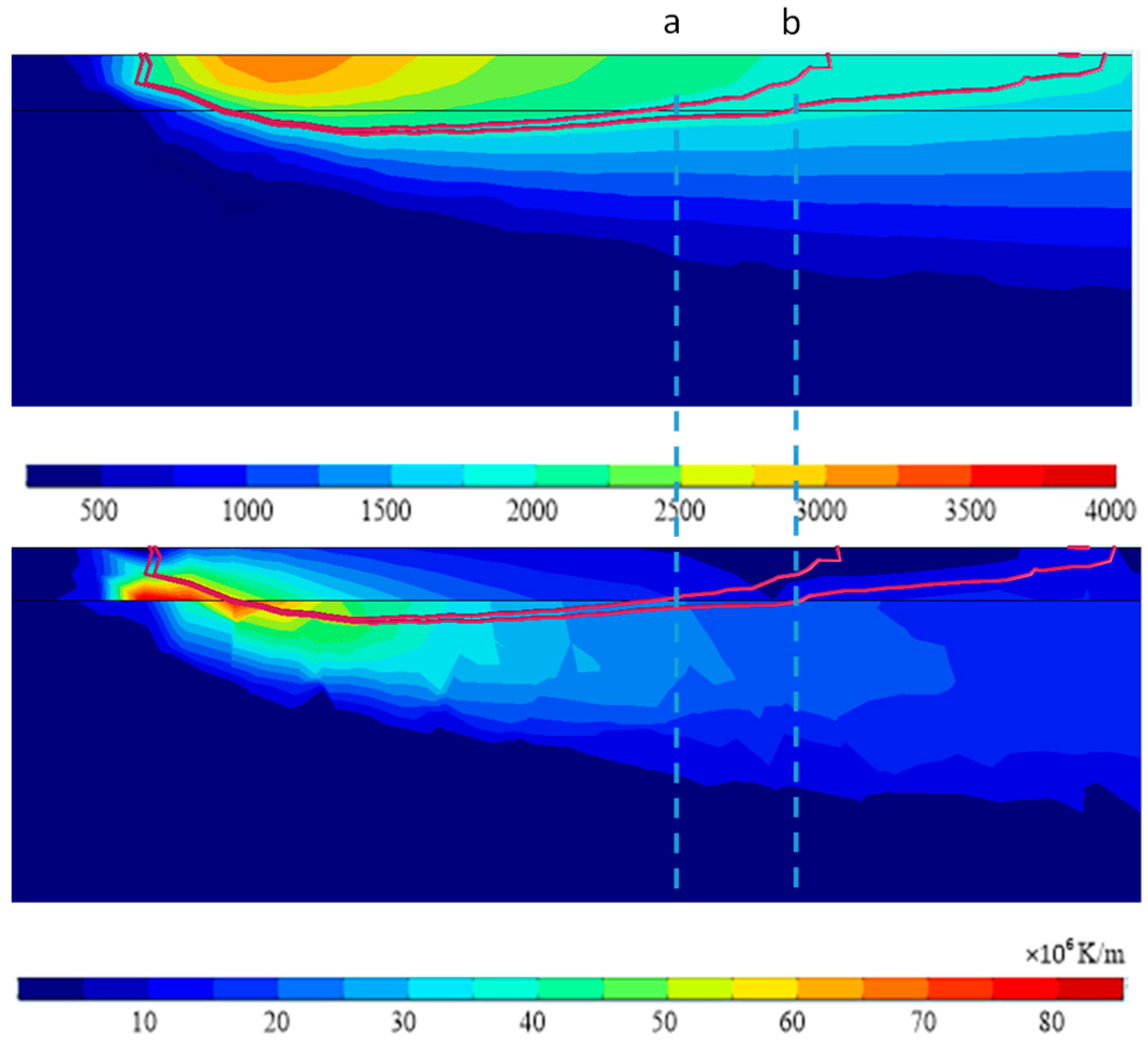
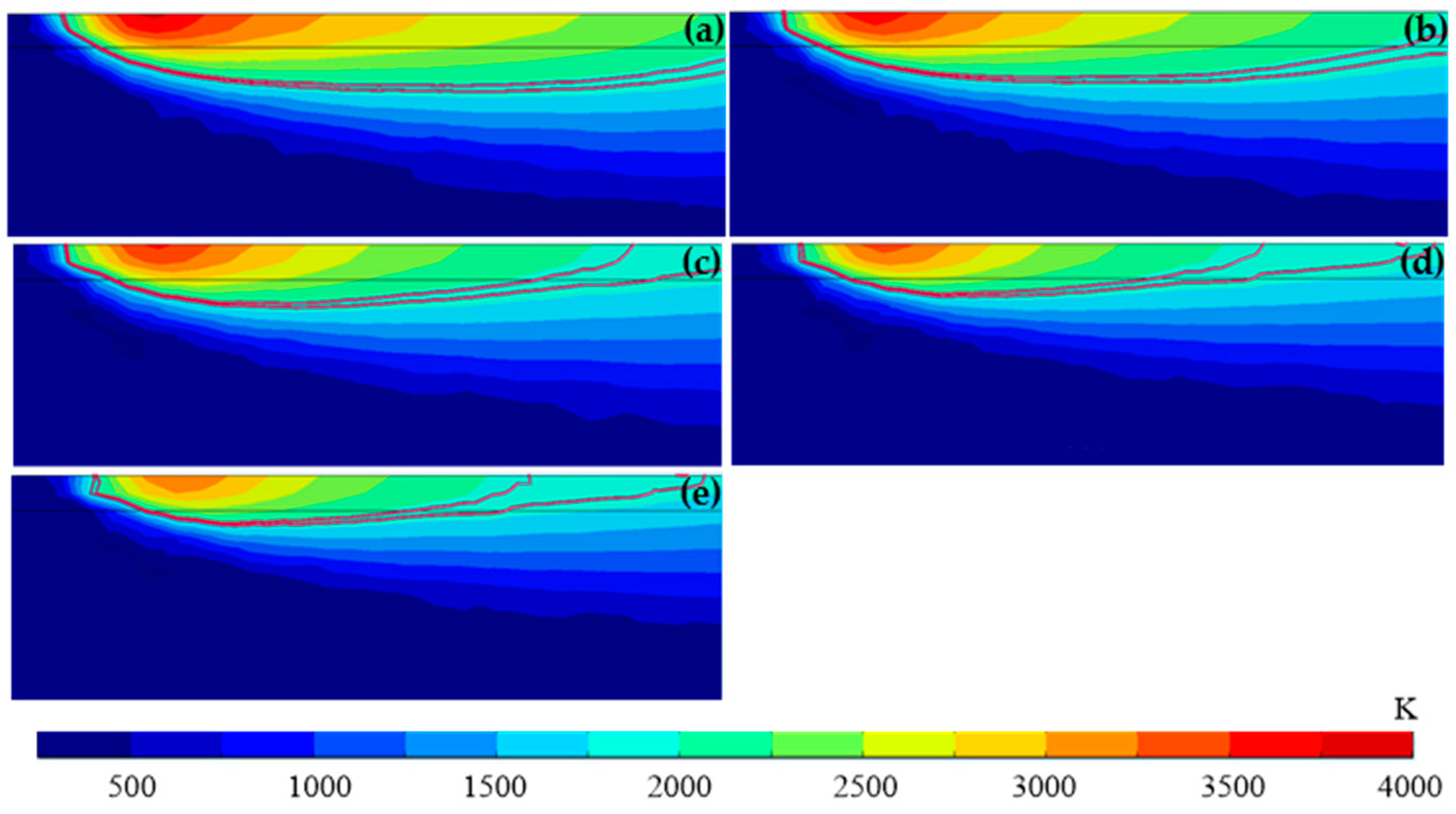
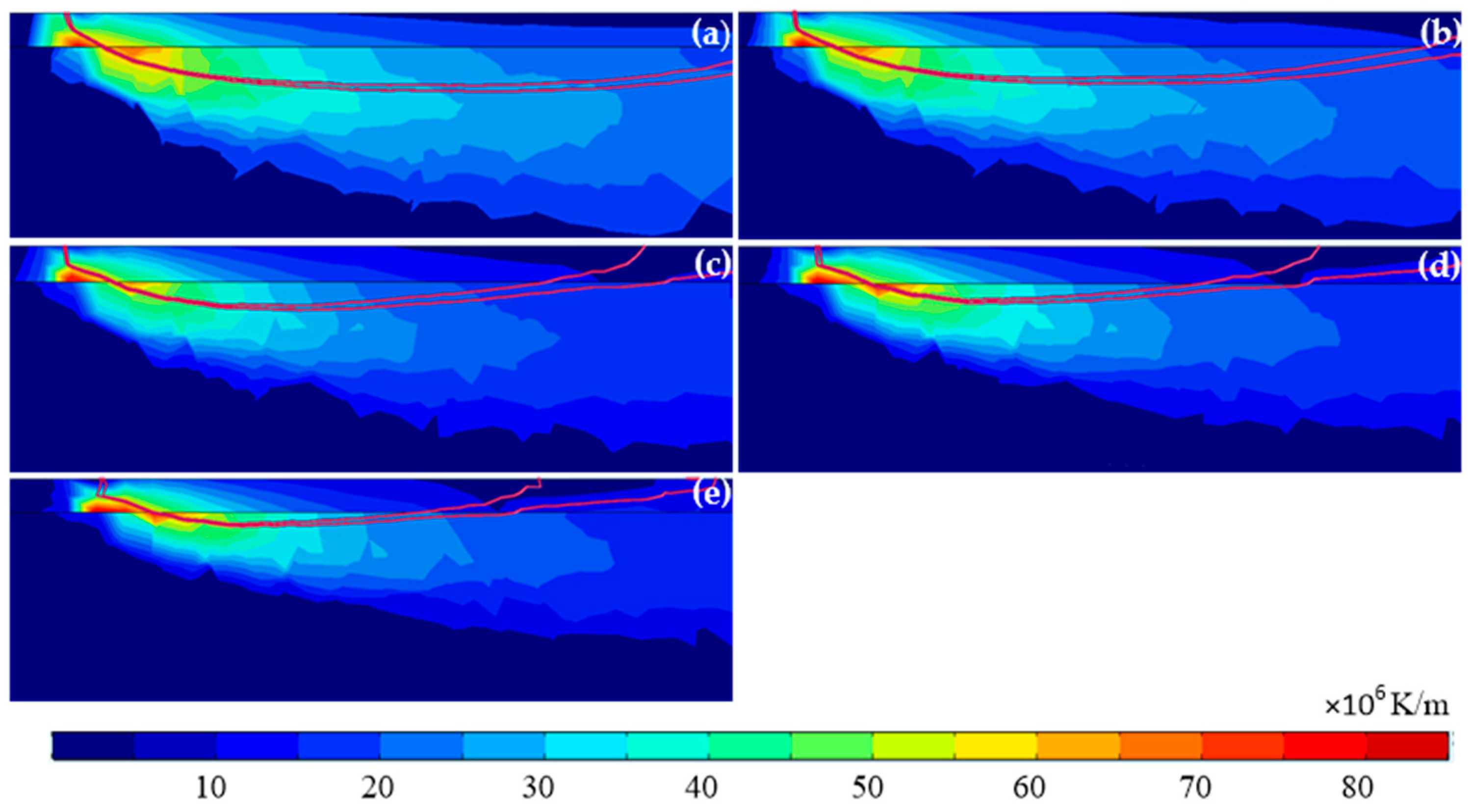

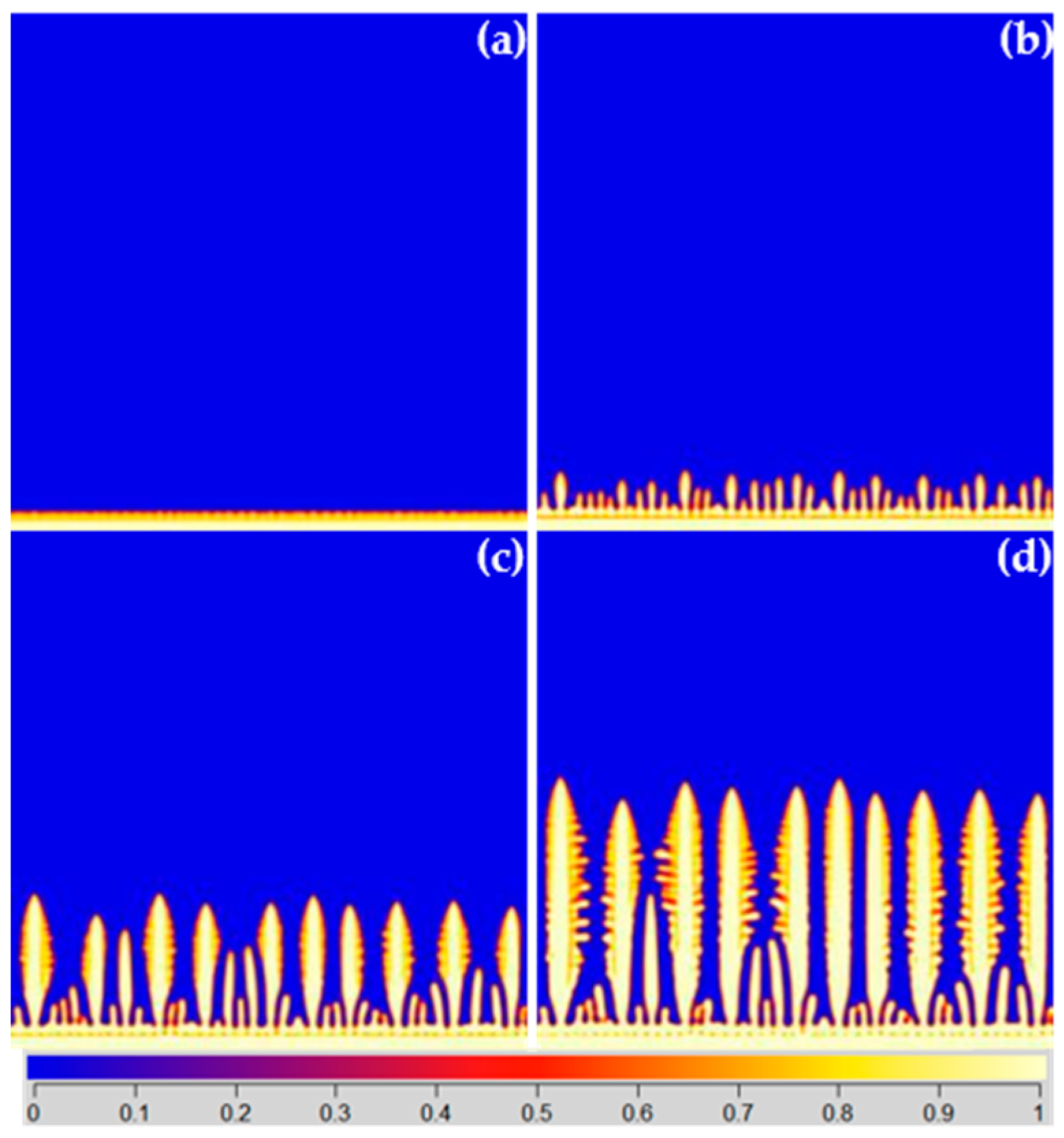

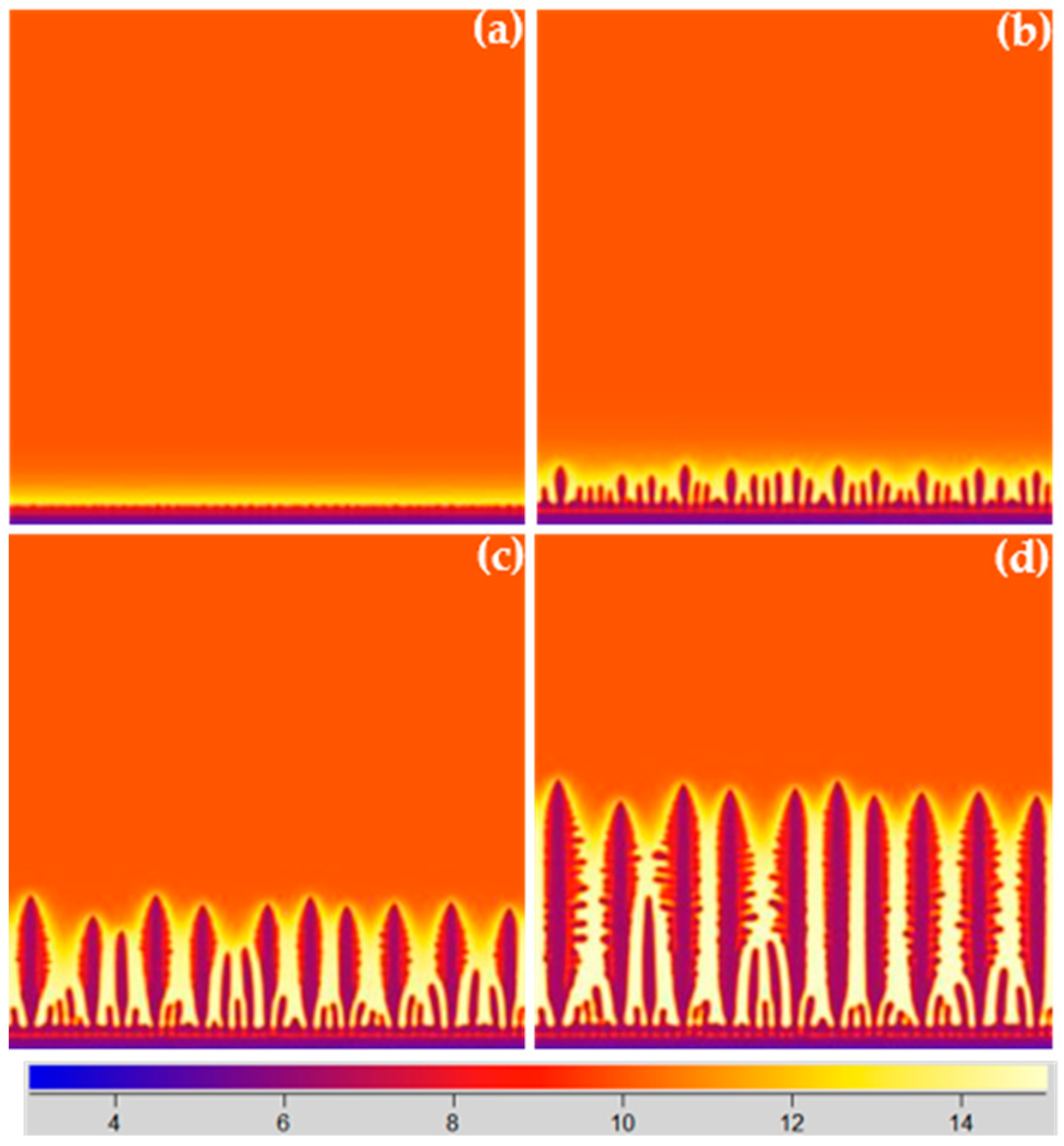

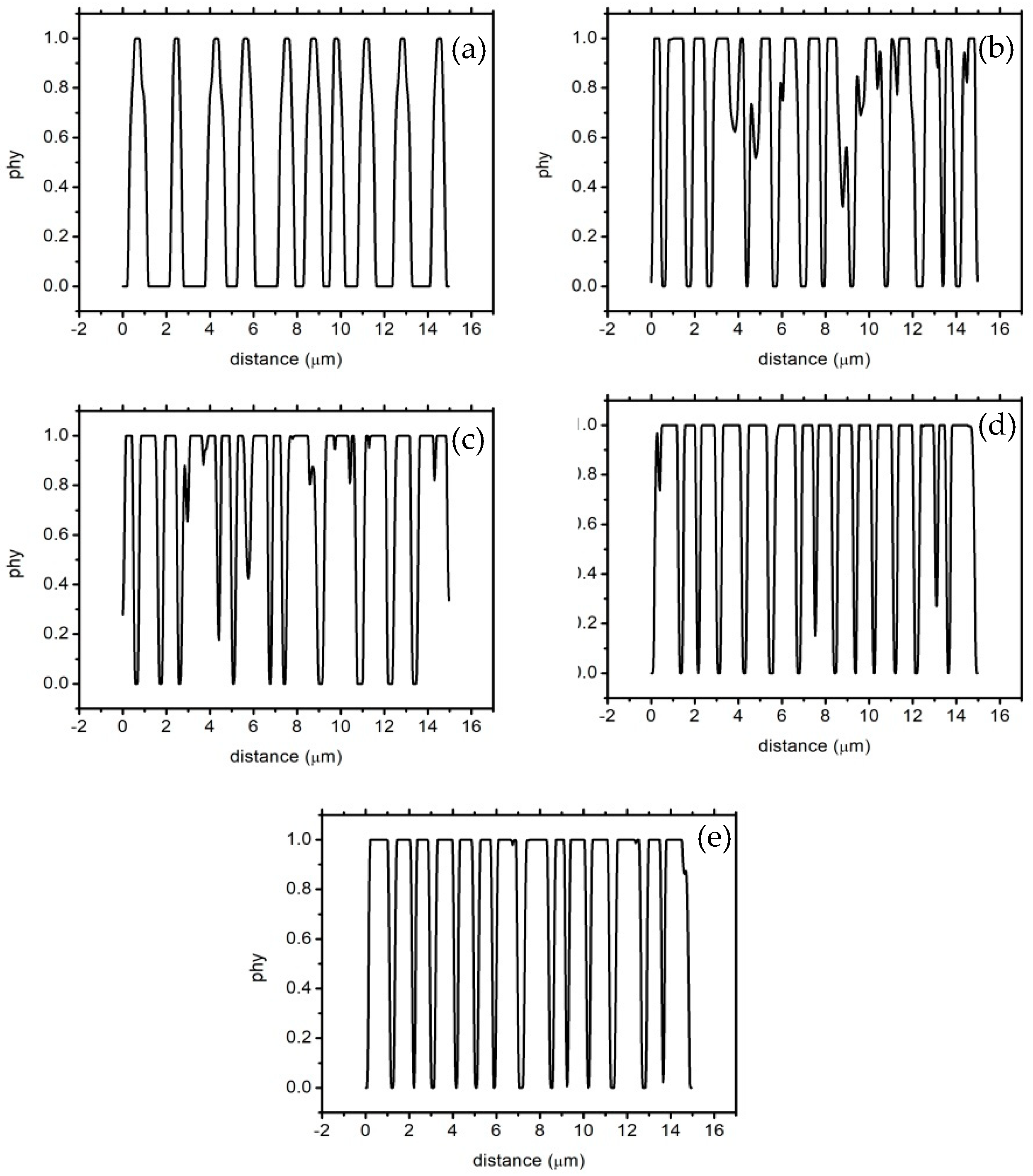
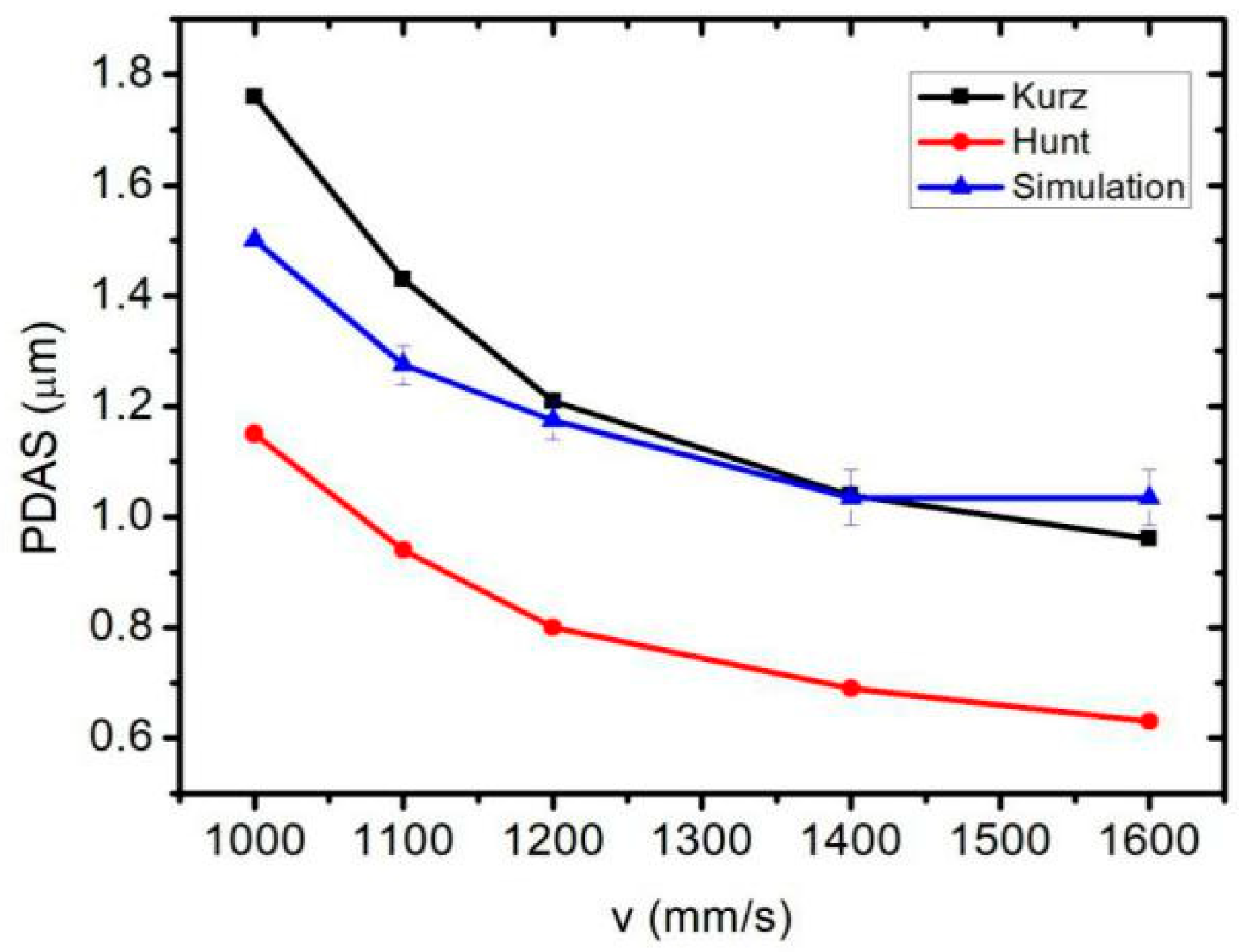
© 2019 by the authors. Licensee MDPI, Basel, Switzerland. This article is an open access article distributed under the terms and conditions of the Creative Commons Attribution (CC BY) license (http://creativecommons.org/licenses/by/4.0/).
Share and Cite
Ding, L.; Sun, Z.; Liang, Z.; Li, F.; Xu, G.; Chang, H. Investigation on Ti-6Al-4V Microstructure Evolution in Selective Laser Melting. Metals 2019, 9, 1270. https://doi.org/10.3390/met9121270
Ding L, Sun Z, Liang Z, Li F, Xu G, Chang H. Investigation on Ti-6Al-4V Microstructure Evolution in Selective Laser Melting. Metals. 2019; 9(12):1270. https://doi.org/10.3390/met9121270
Chicago/Turabian StyleDing, Ling, Zhonggang Sun, Zulei Liang, Feng Li, Guanglong Xu, and Hui Chang. 2019. "Investigation on Ti-6Al-4V Microstructure Evolution in Selective Laser Melting" Metals 9, no. 12: 1270. https://doi.org/10.3390/met9121270
APA StyleDing, L., Sun, Z., Liang, Z., Li, F., Xu, G., & Chang, H. (2019). Investigation on Ti-6Al-4V Microstructure Evolution in Selective Laser Melting. Metals, 9(12), 1270. https://doi.org/10.3390/met9121270






